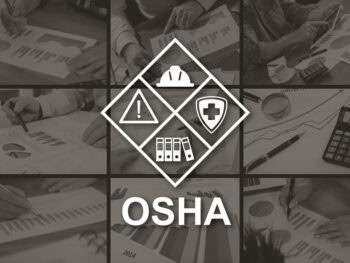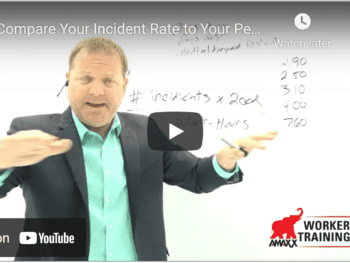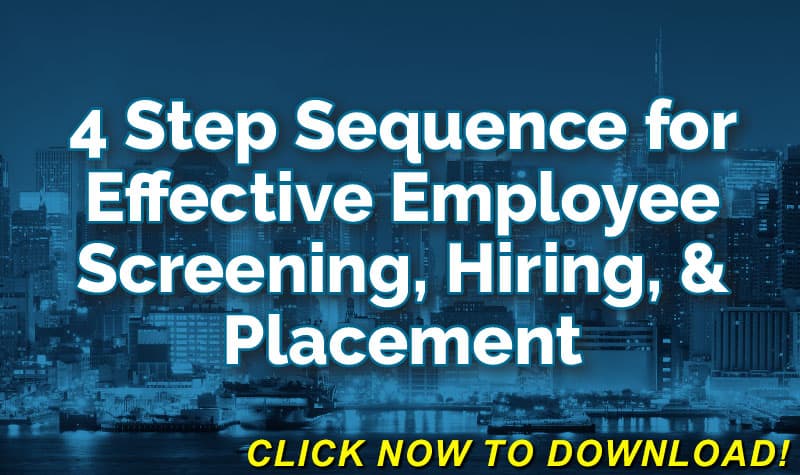Safety program incentives are a popular tactic as all good risk managers understand the importance of preventing injuries. From the employers perspective, the buy-in of the employees into the safety program should be a given, as the employer sees the safety program as protecting the employees from injury. However, the employees, especially the ones who have never been hurt on the job, may view the safety program requirements as hindrances in their performance of their work.
Unintended Consequences of Safety Program Incentives
To encourage employee participation in their safety programs, employers often add what they see as incentives for the employee’s to participate. For example, the employer may offer gift cards to local businesses with the size of the gift cards tied to the number of days the employer has gone without a report of a work comp claim. While some employees will view the gift cards as bonus compensation, it may have the unintended consequence of causing an employee with an injury to not report the injury due to peer pressure. If the injury develops complications due to the lack of timely medical care, the injury gets reported late and the cost of the medical benefits is higher than it would have otherwise been.
Click Link to Access Free PDF Download
“4-Step Sequence For Effective Employee Screening, Hiring, & Placement”
Safety program incentives can be used to create employee interest in the safety program and motivate employees (and managers and supervisors) to act and work in a safe manner. But, if the incentives become the focus of the safety program and actual safety is not the focus, then the incentives become interference in obtaining a true safe working environment.
Train Employees to Work Safely
Instead of the emphasis of the safety program being on the incentives, the emphasis should be on training the employee how to work safely. Educating the employee in the proper performance of their job will have a bigger impact on the overall safety record of the employer than an incentive program. If the employees do not know how to work safely, the incentive program will fail.
A tactic taken by some employers is to tie performance bonuses for managers and supervisors to the number of injuries reported at a work site. If the managers and supervisors are more interested in the bonus then they are their actual safety performance, they can go outside the lines of propriety by pressuring employees to not report claims or by delaying the reporting of claims until their bonus is paid. Any incentive program from managers and supervisors must have built-in safeguards to be sure all claims, big and small, are reported timely.
The safety program needs to be constructed where the employees are motivated to act in a safe manner and to promote safety with their fellow employees without anyone feeling there will be retribution for reporting an injury. If the employees feel there is retribution or retaliation for reporting an injury, the number of reported injuries may declined slightly, but the actual number of injuries does not decline.
When safety programs are tied to return to work programs, with only lost time claims being counted by the employer in awarding safety incentives or bonuses, there can be an abuse of the return to work program. There are situations where the employee following an injury is unable to perform any meaningful work for the employer. If the employee is returned to work anyway and sets in the cafeteria or break room all day doing nothing, it will have the unintended consequence of demoralizing other employees who see the injured employee as receiving preferential treatment.
Progressive Discipline Can Create Morale Problem
Some employers have tried tying safety programs to progressive discipline where injured workers are reprimanded for unsafe acts that result in an injury to themselves or others. The problem of using progressive discipline is it usually has three or four steps including a written warning, probation, suspension and termination. Only the most careless of employees will have three or four safety violations or at-fault injury claims where they can be terminated for repeated violations of the safety program. While the progressive discipline approach can reduce safety violations, it can also create a morale problem, especially if the employee does not feel he/she acted in an unsafe manner.
For safety programs to be effective there needs to be:
- A screening program to prevent the hiring of people who are prone to accidents or who have a lax attitude toward safety
- A drug testing program that includes pre-hire testing, post-accident testing, random testing and for just-cause testing
- A culture of safety before profits or production within the company
- An integration of the safety program into the company’s quality control program
- A way to quantify risk and measure the results of changes with the work process
To prevent problems within the safety program, employers need to keep the focus of the safety program on training the employees, not on incentives for either the employees or the supervisors/managers. Safety program incentives should be used only as a way of obtaining the employee’s interest in the safety program. Properly educating the employees on how to work safely will have a much greater impact on worker safety than any incentive program.

Author Rebecca Shafer, JD, President of Amaxx Risk Solutions, Inc. is a national expert in the field of workers compensation. She is a writer, speaker, and publisher. Her expertise is working with employers to reduce workers compensation costs, and her clients include airlines, healthcare, printing/publishing, pharmaceuticals, retail, hospitality, and manufacturing. She is the co-author of the #1 selling book on cost containment, Workers Compensation Management Program: Reduce Costs 20% to 50%. Contact:.
Contact: RShafer@ReduceYourWorkersComp.com.
Workers’ Comp Roundup Blog: https://blog.reduceyourworkerscomp.com/
©2019 Amaxx LLC. All rights reserved under International Copyright Law.
Do not use this information without independent verification. All state laws vary. You should consult with your insurance broker, attorney, or qualified professional.

















